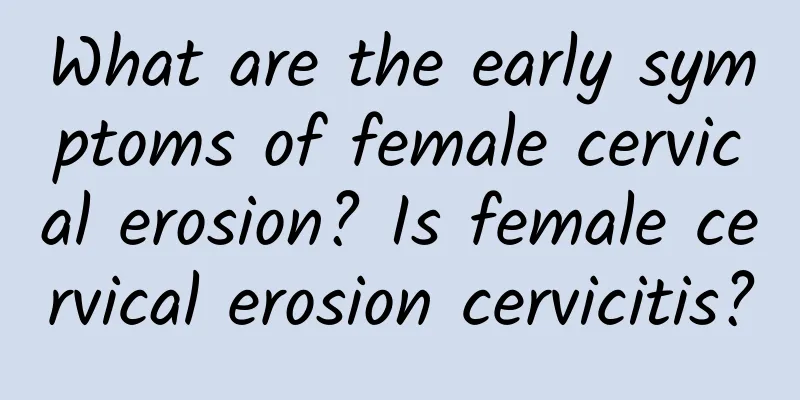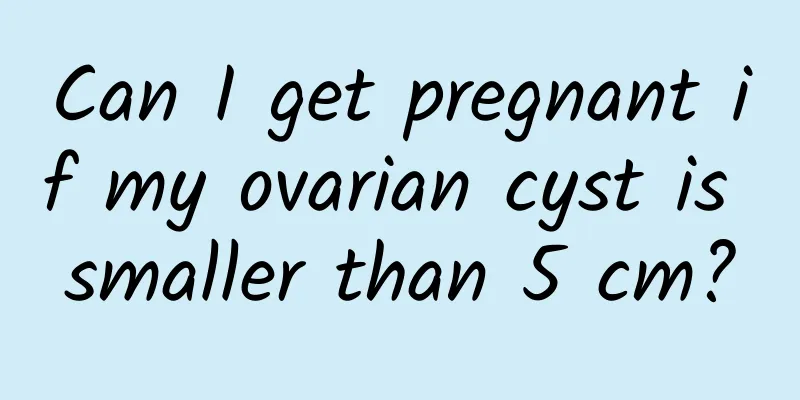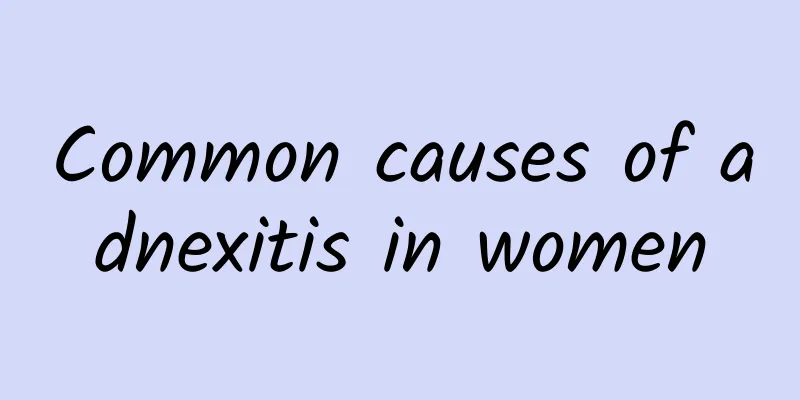Is there any relationship between cervical erosion and polyps?

|
Cervical erosion and polyps are two different cervical diseases, but there may be a certain connection. Cervical erosion is usually related to changes in hormone levels, chronic inflammation or infection, while cervical polyps are mostly caused by chronic inflammatory stimulation or hormone imbalance. Although there is no direct causal relationship between the two, long-term inflammation may increase the risk of both. 1. Causes of cervical erosion Cervical erosion is not a true erosion, but the outward migration of the columnar epithelium in the cervical canal, forming a phenomenon similar to erosion in appearance. Common causes include hormone level fluctuations, chronic cervicitis, bacterial or viral infection, etc. Increased estrogen levels may promote the outward growth of columnar epithelium, while chronic inflammation or infection may cause damage to cervical tissue. 2. Causes of cervical polyps Cervical polyps are benign tumors formed by the proliferation of the cervical mucosa, which are usually related to chronic inflammation, hormone imbalance or local irritation. Long-term cervicitis, vaginitis or cervical injury may induce the formation of polyps. Abnormal hormone levels may also affect the growth of the cervical mucosa and cause polyps. 3. The relationship between the two Although cervical erosion and polyps are independent diseases, chronic inflammation may be a common cause of both. Long-term inflammatory stimulation may lead to abnormal proliferation of cervical tissue and increase the risk of polyps. At the same time, inflammation may also aggravate the symptoms of erosion. Imbalance in hormone levels may affect the occurrence of both at the same time. 4. Treatment methods Treatment of cervical erosion depends on the cause. Erosion caused by infection requires antibiotics or antiviral drugs, such as azithromycin and metronidazole. Erosion caused by hormone fluctuations can be improved by adjusting hormone levels. Physical therapy such as laser, freezing or electrocautery can also be used to relieve symptoms. The treatment of cervical polyps is usually surgical resection, such as cervical polypectomy, electrosurgical resection or laser resection. After surgery, attention should be paid to preventing infection and avoiding recurrence. For polyps caused by inflammation, the primary inflammation should be treated at the same time, using antibiotics such as cephalosporins or metronidazole. 5. Preventive measures The key to preventing cervical erosion and polyps is to reduce inflammation and maintain hormone balance. Regular gynecological examinations can detect and treat diseases such as cervicitis and vaginitis in a timely manner. Avoid unclean sex and use condoms to prevent infection. Maintaining good living habits, such as a balanced diet and moderate exercise, can help maintain stable hormone levels. Although there is no direct causal relationship between cervical erosion and polyps, chronic inflammation and hormone imbalance may be common causes of the two. Through targeted treatment and preventive measures, the risk of both can be effectively reduced. Regular gynecological examinations and a healthy lifestyle are the key to prevention. |
<<: How long does it take to get pregnant again after a hydatidiform mole?
>>: Is hydatidiform mole dangerous?
Recommend
To prevent cervical hypertrophy, you must choose the right method
The appearance of cervical hypertrophy is very ha...
Research confirms: Eating chocolate cake is more effective in losing weight
Are you kidding me? Eat chocolate cake to lose we...
What are the specific preventive measures for cervical hypertrophy?
What are the specific preventive measures for cer...
What are the causes of cervicitis?
Cervicitis is a disease that many women suffer fr...
Shape the S curve! Learn cat stretch yoga
Moderate yoga movements can not only exercise and...
Eating the right breakfast is healthy! Lose weight within 1 hour after waking up
In the morning, sunlight turns on the biological ...
What are the signs of recurrent miscarriage?
What are the signs of recurrent miscarriage? Habi...
Seven early signs of ectopic pregnancy
Ectopic pregnancy refers to the implantation and ...
Edema is not just caused by eating too much salt, the timing of drinking water is also important! Get rid of 6 bad habits and get rid of edema
Many people are worried that water retention in t...
Salty and sweet taste, control your diet and don't eat too much
Text/Natsume Saiko (Japanese writer) ★Salty The c...
Why do I need laparotomy for uterine fibroids? Is minimally invasive surgery or laparotomy better for uterine fibroids?
Why do I need laparotomy for uterine fibroids? Ut...
Avocado is highly nutritious and has many ways to eat it.
Taiwan is the kingdom of fruits. Avocados were in...
What are the early symptoms of habitual miscarriage?
The early stages of habitual miscarriage can caus...
What should patients with acute adnexitis pay attention to?
What should patients with acute adnexitis pay att...
What causes ovulation bleeding?
Ovulation bleeding refers to a small amount of va...









